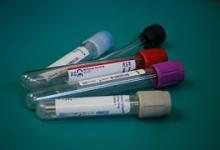25-Hydroxyvitamin D levels and Lupus Outcomes Save

Key Takeaways
- Low levels of vitamin D and its principal circulating form 25-hydroxyvitamin D (25-OH-D) have been linked to many types of adverse outcomes beyond bone health, such as cardiovascular disease.
- How vitamin D levels may affect outcomes in lupus patients has not been well studied, especially over the long term.
- This prospective cohort study, with many years of follow-up, showed markedly increased risk for all-cause mortality and cardiovascular events in lupus patients with low levels at enrollment.
Lupus patients entering a prospective cohort study with low vitamin D levels faced doubled all-cause mortality risk and tripled risk for major cardiovascular events during follow-up averaging 6 years, researchers said.
Among patients with systemic lupus erythematosus (SLE) with levels of 25-hydroxyvitamin D (25-OH-D) -- the vitamin's main circulating form -- below 20 ng/mL when first enrolled in the Hopkins Lupus Cohort, major cardiovascular events occurred at a rate of 8.6 per 1,000 person-years, according to Michelle Petri, MD, MPH, of Johns Hopkins University in Baltimore, and colleagues. In contrast, those with 25-OH-D levels in the range of 30-39 ng/mL suffered such events at a rate of 2.7 per 1,000 person-years.
After adjusting for age, sex, race/ethnicity, and body mass index, the difference worked out to a hazard ratio of 2.98 (95% CI 1.30-6.85), the group reported in Annals of the Rheumatic Diseases.
Similarly, when comparing risk of all-cause death in cohort members with initial 25-OH-D under 20 versus 30-39 ng/mL, Petri and colleagues found an adjusted hazard ratio of 2.05 (95% CI 1.19-3.54).
Recent measurements of 25-OH-D, however, were not significantly associated with such risks. Rates for patients in the middle and upper ranges of levels measured in the past year weren't far below those with levels less than 20 ng/mL. Still, nearly all comparisons showed higher numerical rates for patients with low levels.
The findings also suggested that vitamin D supplementation might not have as much benefit as patients and clinicians would hope. "Among patients with initially low vitamin D, improving levels during follow-up did not reduce cardiovascular event rates, raising important questions about the timing and long-term impact of vitamin D supplementation in altering cardiovascular outcomes in SLE [systemic lupus erythematosus]," Petri's team wrote.
Countless studies have linked low vitamin D levels with a range of adverse outcomes, well beyond bone health. Cardiovascular disease and events are prominent among the risks seen to be increased with low vitamin D. SLE also comes with increased cardiovascular risk, but how vitamin D levels may affect that risk has not been studied previously with prospectively collected data.
Thus the Hopkins cohort, now running for nearly 40 years, offers a good opportunity for such research. For the current analysis, Petri and colleagues analyzed data from 1,768 cohort members, with 11,302 person-years of follow-up.
Mean patient age at enrollment was 42, and more than 90% were women. Just under half were white, and 40% were Black. Generally, patients were seen in clinic every 3 months, with blood samples taken at each visit along with other evaluations. Cardiovascular events counted in the study included stroke, myocardial infarction (MI), angina, and bypass graft surgery.
While this composite measure was clearly increased with low 25-OH-D at enrollment, the risk was not spread evenly among the individual component events. Risk of stroke was strongly elevated (HR 3.53, 95% CI 1.13-11.0), but MI not so much (HR 1.90, 95% CI 0.57-6.33).
The researchers also conducted a "lifetime analysis" in which cardiovascular events occurring prior to cohort entry were also counted. It yielded an interesting result -- a U-shaped relationship seen for MI:
- <20 ng/mL: HR 2.44
- 20-29: HR 1.93
- 30-39: HR 1.0 (reference)
- 40-49: HR 1.53
- 50-plus: HR 2.74
Notably, the hazard ratios for less than 20 and 50-plus ng/mL were statistically significant. For stroke and for the composite of all major events, only those patients with levels under 20 ng/mL had significantly higher event rates compared with the 30-39 ng/mL group.
Petri and colleagues added an exploratory analysis examining 25-OH-D trajectories over time, to see if patients with initially low but rising levels fared better than those with persistent vitamin D insufficiency. The short answer: not noticeably.
This analysis compared four groups: patients with initial levels below 30 ng/mL whose last-year values remained that low (group A); those initially below 30 ng/mL and with higher last-year levels (group B); those with initial levels above 30 ng/mL but lower in the last year (group C); and those initially above 30 ng/mL and remaining in that range in the last year (group D). Following are the hazard ratios for the cardiovascular event composite:
- Group A: 1.0 (reference)
- Group B: 0.88 (P=0.71)
- Group C: 0.39 (P=0.37)
- Group D: 0.57 (P=0.11)
With group B comprising participants whose vitamin D levels increased over time, there was no indication that their cardiovascular risk was diminished relative to those whose levels stayed in the lower ranges throughout follow-up.
Probably the chief limitation to this analysis, and the study as a whole, was that only 67 cardiovascular events were recorded during follow-up across the entire cohort, thus leaving the study potentially underpowered for some comparisons.
Also, untangling vitamin D levels from the many factors that influence them is extremely tricky, especially in people with chronic diseases. Diet, use of supplements, sun exposure, and, very importantly, skin tone all can affect vitamin D levels. Some patients with SLE may be disabled enough that they don't spend much time outdoors, or they may eat convenience foods that don't provide enough dietary vitamin D. As well, while Petri's group included race in their statistical adjustments, race was self-reported by cohort members, and identification as Black correlates only imperfectly with skin tone. Consequently, the researchers weren't able to take account of important potential confounders.

The National Institutes of Health funded the study. Authors declared they had no relevant relationships with commercial entities.









If you are a health practitioner, you may Login/Register to comment.
Due to the nature of these comment forums, only health practitioners are allowed to comment at this time.